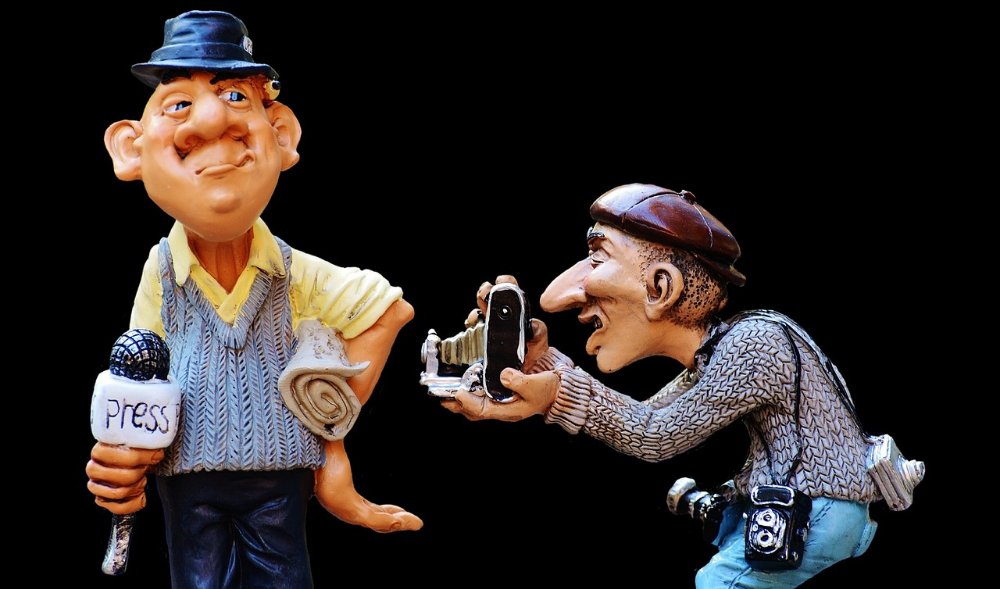Over the course of his long career as a news anchor, Walter Cronkite earned the nickname, “The Most Trusted Man In America.” People could depend on the levelheaded anchor to accurately report the news on critical stories from Vietnam to the Moon landing to Watergate and beyond.
No one called him Woke Walt, or Crooked Cronkite. Instead we saw a fair, decent man in our living rooms, sharing the news to the best of his abilities. Sadly, today we’ve got no beloved figure like Cronkite, and folks are on their own in determining whom to trust when it comes to breaking news. And that is a problem.
Each of us now chooses the news we use, picking the channels, hosts, and sites we like, and forming personal “news silos” we trap ourselves in, never seeing stories that might challenge our world view.
In addition to our self-selected news silos, Artificial Intelligence (AI) has presented us with a brand-new problem when it comes to discerning what is true. Bad actors can generate fake videos and photos in an instant, creating a counterfeit reality that seems perfectly real. (Confession: I love the deepfake Tom Cruise videos as much as anyone, but soon it will be presidential candidates and World leaders being imitated – and a whole lot less humorous.)
With Cronkite long gone, we’re now gonna need a fact-checker-for-all: reports, viral videos, political statements, health emergencies, and Taylor Swift photos. That ultimate fact-checker is going to have to be …you. Not on every story that comes across your social media, but definitely the crucial stories that matter.
So here are a few tips on how to do that:
First, check the news source itself.
No offense, but it shouldn’t be a meme your cousin sent you on Facebook. Do a quick Google or Wikipedia search on the website or publication publishing the piece and see if other legitimate news organizations describe the source as credible (vs. satirical, unreliable, or full-on propaganda). Checking the byline on a story is another great way to confirm it was written by a professional journalist, or leader in the field. Does the article contain factual reports, scientific data, and studies?
Second, triangulation!
Compare the coverage of a story across multiple outlets for veracity: If the Wall Street Journal and Joe Rogan are your jam, make sure to also see how CSPAN or your local newspaper covered the issue. If you really want a deep dive, check the AP (Associated Press), Washington Post, ProPublica, Rolling Stone, Mehdi Hassan’s Zeteo site, the Atlantic, or PBS stations. (Don’t currently subscribe to any news sites? May I suggest you spend the same amount of money as you do on Netflix or Hulu or Disney+, and support to your local paper and a few additional news outlets?) Sites like PolitiFact, Snopes and FactCheck.org can also be helpful. In my neighborhood, the best overall source for scoops is actually the West Seattle Blog (run by long-time journalists).
Finally, pay attention to “attribution.”
Hearsay, speculation, and rumor are not news. Is the writer/broadcaster specialized or a leader in the field the story is concerned with? Are the sources used in a position to know about the issue? Does the reporter verify any details that are disputed elsewhere, or just repeat the info directly from officials? Too often, especially with bombshell news, bad actors jump in with false material to increase their clicks and shares. (See Elon Musk.) Be patient with breaking news — quality journalism and verification take time; credible sources (unlike Tucker Carlson) will update and correct errors and mistakes.
Today, any jabbermouth with a cellphone can produce a show of their own, spewing nonsense and misinformation. As a counterpoint, we’re each going to have to make a habit of some old-fashioned journalistic sleuthing to objectively determine what’s real and truthful. As old Walt Cronkite would say, “And that’s the way it is.” Of course, you better double-check that.
Discover more from Post Alley
Subscribe to get the latest posts sent to your email.
